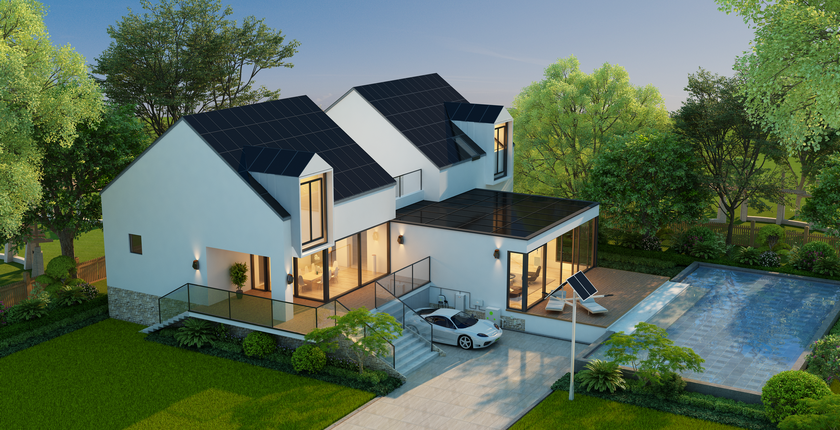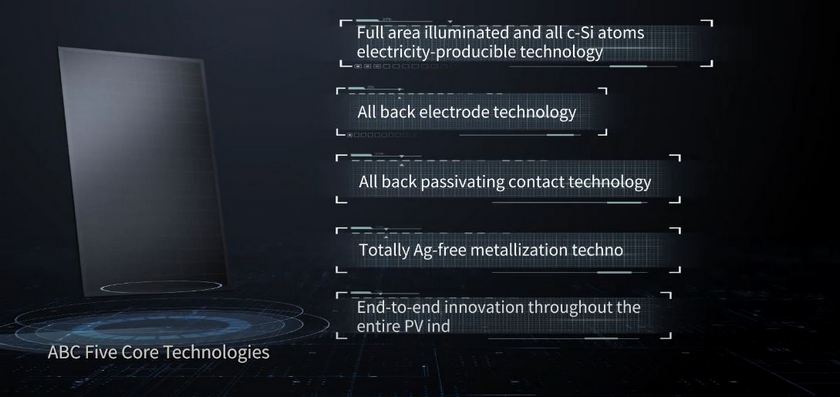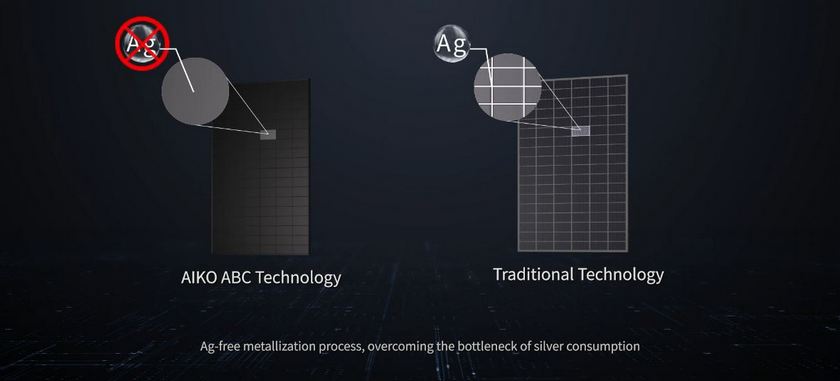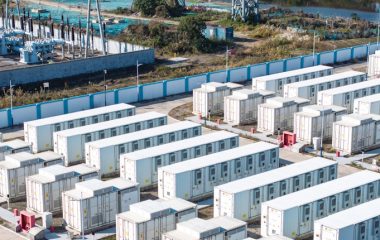
Photo: AIKO Solar
This year’s top-performing solar modules by efficiency, innovation, and design could soon become available in markets across the Western Balkans. AIKO Solar’s all-back-contact (ABC) modules, with their record-breaking conversion efficiency and elegant appearance, have already been rolled out in Albania, with the company announcing further expansion in the region.
ABC modules, invented and developed independently by AIKO, have led the TaiyangNews Top Solar Modules Listing this year, outranking other commercially available products. According to the listing in June 2023, AIKO had an efficiency rate of 24%, breaking its own record of 23.6%, set in March, and beating the runner-up by 0.8 percentage points.
Also this year, AIKO scooped Intersolar Award 2023, handed to the most innovative and disruptive products and technologies in the photovoltaic industry. The criteria include innovation, technological creativity, and environmental impact.
Intersolar Award recognizes the most innovative products and technologies
The jury noted that AIKO’s ABC modules combined n-type solar cells with passivating contacts and back-contact architectures to create some of the world’s most powerful solar panels, reaching a capacity of 620 watts at 24% efficiency, significantly higher than most available panels.
The Intersolar jury also recognized the ABC modules’ clean aesthetics, thanks to their pure-black front, as well as their environmental benefits, since no silver is used in their production.
With over 1,000 patents in more 30 countries or regions around the world, including 188 invention patents, AIKO promotes innovation throughout the entire photovoltaic industry chain – technological processes, machinery, and products, ensuring strict control for quality and security of supply. The company also provides raw material traceability and complies with ESG (Environmental, Social and Governance) requirements.

Efficiency and elegance: Pure black panels with record conversion rate
The ABC cell technology is developed by AIKO with completely independent intellectual property rights. The most outstanding feature of the ABC cell is that it greatly improves the conversion efficiency by placing both the emitter and the base on the back side of the cell, without gridlines on the front. Of all M10 photovoltaic products on the market, AIKO’s modules are the first that can be mass produced with a deliverable efficiency of more than 24%.
Other key advantages of AIKO’s innovative high-efficiency ABC modules include a 15% higher energy yield per surface area compared with the traditional PERC (passivated emitter and rear contact) technology, as well as a very low power degradation rate over their 30-year lifespan.
“The main strength of AIKO’s innovation is the solar cell technology created by our laboratory. In 2016, we created cells using tubular PERC technology, and then in 2018, bifacial SE-PERC cells, which created a new trend in the industry. These innovations led us to our most important discovery in recent years, ABC (All-Back-Contact) cells,” says Federico Brunelli PhD, Solutions Europe Director at AIKO.
“Thanks to this technology, we have achieved record efficiency of 24% in AIKO ABC modules, a better temperature coefficient (Pmax) of -0.26%/°C and a very low level of power degradation – a maximum of 1% during the first year and 0.35% in subsequent years of use,” says Brunelli.
The back-contact structure and a full-black front with no electrode gridlines ensure that AIKO’s ABC modules receive 100% of sunlight. Also, all cells are passivated with high quality passivation technique, eliminating the so-called “dead layer,” which normally forms in traditional cell structures and which affects electricity output.
The full-black front with no gridlines ensures AIKO modules absorb 100% of sunlight
All-back electrode technology is used in ABC cells in order to avoid the resistance/shading contradiction found in traditional cells. This innovative design, patented by AIKO, leaves the front clear of all electrode gridlines and reduces the heating loss of electrode resistance by 60%.

Frank Feldmann, chief scientist at AIKO’s research and development center in Germany, called SolarLab Aiko Europe, explains that back-contact modules have an edge not just compared with PERC but also compared with other n-type modules.
Back-contact cells have an edge against other n-type technologies
The photovoltaic industry is shifting from p-type (positive charge) modules to n-type (negative charge) modules, and most of the companies across the globe have opted for tunnel oxide passivated contact (TOPCon) or heterojunction.
Feldmann says that one of the main advantages of back-contact cells is that they can integrate passivating contact for both polarities, which is more complicated to do in TOPCon cells.
“This means you will always have some parasitic absorption losses at the front side in this polysilicon contact. Whereas with the ABC cell, that is placed conveniently on the rear side,” Feldmann explains in an interview with pv-tech.
Other manufacturers are expected to adopt the back-contact technology eventually, but AIKO decided to take the step much sooner, according to him. Feldmann also says that AIKO continuously aims to improve the efficiency of its ABC cells and modules, targeting cell efficiency above 27%.
AIKO’s silver-free modules conserve Earth’s resources
Another important feature of the ABC module is its patented, totally silver-free metallization technology, which brings environmental benefits by reducing the consumption of this scarce metal. In traditional cell products, silver is used at least on the front side of the solar panel. In AIKO’s silver-free technology, by contrast, all metals used in the production of solar modules are sustainable metals.

“The availability of silver, like many other precious raw materials, is limited on Earth. The dynamic development of the photovoltaic industry translates into increased consumption of this raw material,” says Federico Brunelli PhD, Solutions Europe Director at AIKO.
The solar industry accounted for 10% of global silver consumption in 2022
“In 2022, the photovoltaic industry accounted for approximately 10% of global silver consumption. The desire to eliminate the use of this raw material in the production process of AIKO modules was dictated by the desire to both increase production sustainability and secure the supply chain,” Brunelli explains.
In addition, AIKO’s silver-free cells have an excellent acid corrosion resistance, of less than 0.25%, compared with more than 1.5% in products that use silver for metallization.


















Be the first one to comment on this article.